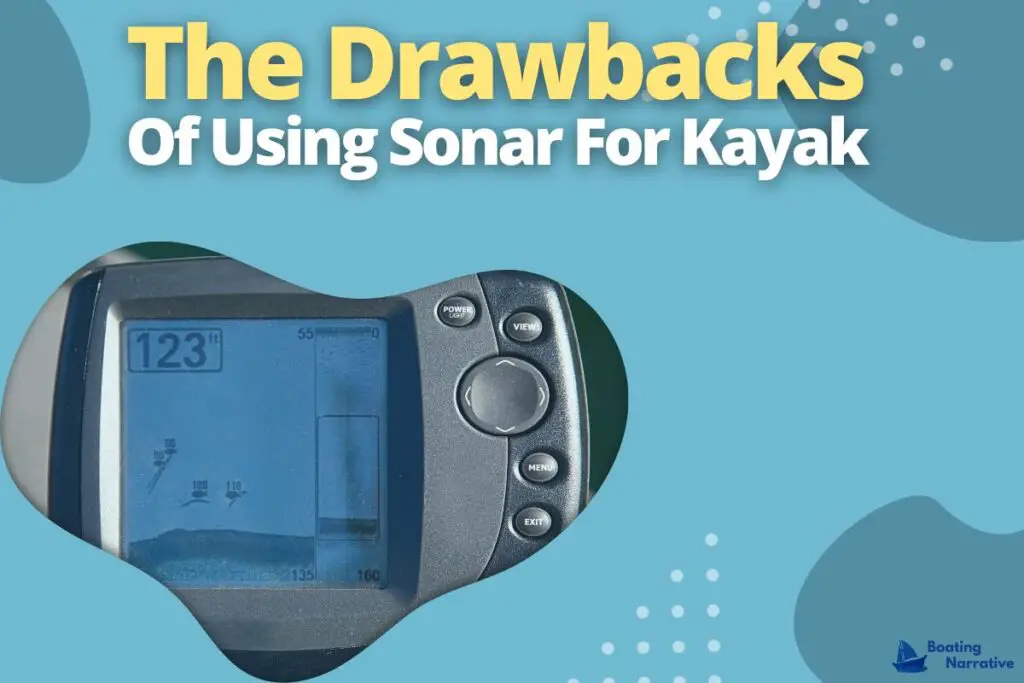As a lifelong kayaker, I’m always looking for ways to increase my safety on the water. While there are many different types of sonar devices on the market,
I wanted to find one that was specifically designed for kayaks. After doing some research, I found the perfect device for my needs.
In this blog post, I’ll share my findings and show you how to choose the right sonar device for your kayak. I’ll also give you tips on how to use it effectively. So, if you’re interested in learning more about kayak sonar, read on.
Key Takeaways
- Kayaks are small, lightweight boats that are easy to maneuver and ideal for exploring calm waters.
- Sonar is a technology that uses sound waves to create a picture of the underwater environment.
- A kayak sonar system can be used to find fish, identify obstacles, and navigate in low visibility conditions.
- Installing a kayak sonar system is relatively simple and can be done by anyone with basic DIY skills.
- Using a kayak sonar system can help you have a more successful and enjoyable kayaking experience.

What is Sonar for Kayak?
Sonar, which stands for sound navigation and ranging, is a method for mapping and photographing the ocean floor using sound waves. Kayak anglers can use this information to find fish, identify structures, and drop their lures or baits in the most productive areas.
Several types of sonar can be used for kayak fishing, including traditional single-beam sonar, dual-beam sonar, side imaging sonar, and down imaging sonar.
Single-beam sonar is the most basic type of sonar and simply sends out a single beam of sound waves that bounce off the bottom and return to the transducer.
This information is then displayed on the screen as a series of blips or arches representing fish or other objects. Dual-beam sonar works the same way as single-beam sonar but with two beams instead of one.
These beams fan out at different angles from the transducer and provide a wider view beneath the boat. Side imaging sonar works by sending out sound waves from transducers mounted on either side of the boat, creating a “picture” of what’s below you in up to 240 feet of water (120 feet on each side).
Sonar Is A Technology That Uses Sound Waves To Detect And Track Objects Underwater

Sonar works by sending out sound waves, which bounce off nearby objects. The returned signal is then analyzed to determine the object’s location.
Since it was first developed for military purposes, sonar has been used to detect submarines and other aircraft in battle zones.
But today, many people use sonar for recreational purposes as well—you may have seen people using handheld fish finders on fishing trips or in lakes near where you live.
A technology called sonar makes use of sound waves to find and follow objects underwater. Sonar can be used on kayaks to help locate fish, navigate through water, and avoid obstacles.
The military uses sonar for tracking submarines or mines underwater. It’s also used by fishermen who want to know what’s lurking below the surface before casting their lines.
With sonar technology now available for use in recreational activities like kayaking, it’s easier for anyone interested in being on the water to take advantage of this powerful tool.
There Are A Few Different Types Of Sonar That Can Be Used On Kayaks, Including Fish Finders, Depth Finders, And GPS Systems
The biggest difference between these devices is their intended use—one will help you find fish, while the other will help you detect objects in the water.
Fish finders are designed to detect fish and other marine life below your boat. When these systems are working correctly, they’ll show an image of what’s below your boat (usually shown in 2D or 3D).
In order to accomplish this, they pulse sound waves into the water column (the part between the surface and seafloor), which bounce back when they hit something like a school of fish or rock bed at varying depths based on how dense or soft they are, respectively.
The best ones also include built-in GPS so that they can give accurate measurements for where those things were detected and where you currently are located on top.
Sonar Can Be A Useful Tool For Kayakers Of All Levels Of Experience, From Beginners To Experts
Sonar is a tool that can help you navigate in water and avoid obstacles. Sonar can be used by beginners and experts alike.
Sonar is useful for kayakers of all levels of experience. Sonar can navigate through water, locate fish, navigate in fog, and more.
However, Sonar Should Be Used With Caution And Care, As It Can Also Be Harmful To Marine Life
However, you should use sonar with caution and care. It is harmful to marine life. Sonar can disrupt the feeding and migration patterns of fish.
It can also disrupt marine mammals’ behavior, causing permanent hearing damage. When using sonar, ensure the unit is mounted correctly and cleanly.
Always make sure that the sonar unit is mounted correctly and cleaned properly. Improper mounting can cause damage to the unit and hearing loss for people nearby.
How Does Sonar For Kayak Work?

Sonar devices send out pulses of sound waves and then listen for the waves to bounce back. The device sends out a sonar pulse and waits for the return wave.
The time it takes for the sonar pulse to travel from the boat, reach the fish, and bounce back determines its depth. The depth is shown on your display as an angler-finder screen or kayak graphics (KG).
When fishing with sonar:
- Use low-power settings, so you don’t scare fish.
- Always use a safe sensor transducer so you won’t damage the fish or the environment.
- Choose sonar models with adjustable beam widths and sensitivity levels to match your fishing conditions.
- Use GPS mapping software (like FishEye kayak GPS mapping) to find fish before you catch them, then adjust your sonar accordingly.
How To Choose The Right Sonar For Kayak?

You should consider a few things when choosing the right sonar for a kayak. These include the kayak you are using, your experience level, and the environment where you will be kayaking.
There is also a wide variety of sonar available on the market today. You can find models that work well with fishing boats or kayaks for navigation.
Some common issues people have with sonar for kayaks include not being able to find fish in tight quarters, getting tangled in fishing lines, and sonar interfering with the navigation of kayaks.
The Benefits Of Using Sonar For Kayak
Sonar is a useful tool for kayakers of all levels of experience, from beginners to experts. It can help you navigate through water and avoid obstacles, locate fish or track the speed of your boat.
Sonar can be used in many ways, but one thing that sets it apart from other technologies is its simplicity. You simply need to mount your phone on the back of your kayak and attach an external microphone to it (via Bluetooth).
The microphone will pick up sounds underwater and transmit them via radio waves to be heard over headphones or speakers mounted on your kayak’s frame.
The Drawbacks Of Using Sonar For Kayak

While sonar may be a useful tool for kayakers, it has some drawbacks. Sonar can harm marine life, especially when the user is too close to the water and the signals bounce off surrounding objects.
The sound waves that come from sonar can also be distracting, making it hard for you to focus on your surroundings.
Additionally, use this technology in a group or as part of an organized event (like racing). Everyone will likely have their device on board which might cause interference with each other’s equipment and drowns out important sounds like marine mammals warning each other of danger (i.e., killer whales).
It’s worth noting that while most sonar systems offer accurate readings at distances up until one hundred feet away from your boat or kayak, they aren’t always 100% accurate—especially if there are multiple boats around yours.
Conclusion
I hope this article has given you a good idea of what sonar is and how it can help you. Many types of sonar can be used on kayaks, so do your research before choosing one.
If you’re new to kayaking or just want peace of mind while on the water, I recommend looking into GPS systems with built-in navigation features like waypoints or tracks.
So, there you have it. A few of the best sonar devices on the market are perfect for kayak fishing. No matter your budget, there is a device on this list that will suit your needs.
Check our website for great articles like this, and follow us on social media for updates.
